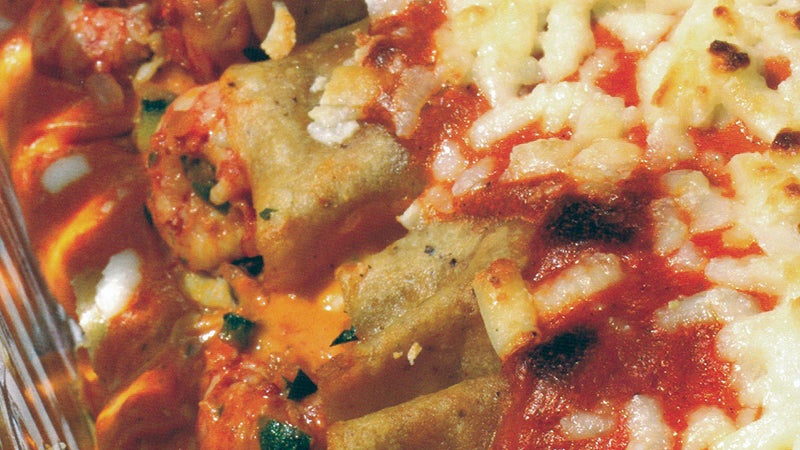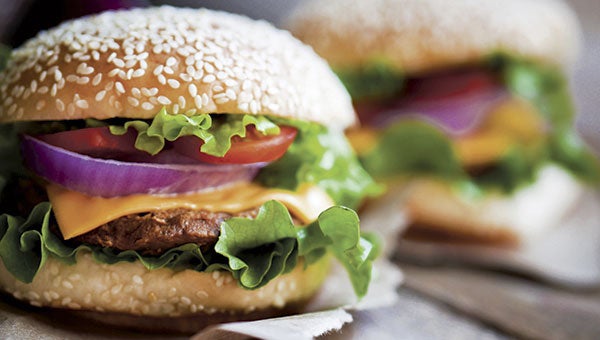Cooking with jicama
Published 2:33 am Saturday, January 13, 2018
In starting the New Year with a healthy start we should look into trying more vegetables.
My husband grew a lot of jícama for a first time this year. He dug it all recently after the first frost killed the vines. We ate it almost every day until it was finished and I leaned to really like and appreciate it. I was talking to a friend at church who also likes it and says she keeps some chopped in the refrigerator for a snack.
Jícama, Pachyrhizus erosus, is a native of Mexico. It can be started from seed in the spring and the long vines which need support produce a pretty blue flower and seedpod. It is another good plant for a summer screen or on a trellis. The plant and seed are toxic but when the first frost comes, dig the roots which have a tuber from egg size to cantaloupe size. They must be pealed and then sliced or julienned. They have been called a ‘savory apple’ and that does approximate the texture and taste without a hint of sweetness. It has also been called the Mexican yam bean or the Mexican turnip as the texture is somewhat like a turnip. It has also been called a Mexican water chestnut but I think the texture there is different.
One can slice them and eat them raw or use instead of carrot sticks with a dip. One can use them to make slaw, chips, or in a stir fry. A favorite way for Mexicans is to sprinkle the slices with chili powder, salt, and lime juice. We have used them most frequently chopped in salads.
They are low in calories, high in fiber which promotes good bone health by increasing the absorption of calcium. They also have vitamin C and potassium, and are a powerful antioxidant and said to help prevent colon cancer.
From Can You Dig It by John D. Folse.
Stir-Fried Pork and Jícama
Serves 6-8
1 ½ cups julienned jícama
1 ½ pounds boneless pork, trimmed and cut into bite-sized strips
1 cup chicken broth
1/3 cup dry sherry
1/3 cup soy sauce
2 tbsps. cornstarch
6 tbsps. vegetable oil, divided
Salt and cracked black pepper to taste
Granulated garlic to taste
1 medium onion, peeled and diced
1 red bell pepper, seeded and julienned
1 yellow bell pepper, seeded and julienned
3 cloves garlic, peeled and minced
1 tsp grated ginger
½ cup diced green onions
3 cups shredded Napa cabbage
In a small bowl, combine broth. Sherry, soy sauce and cornstarch. Whisk together well and set aside. In a large skillet or wok, heat two tablespoons vegetable oil over medium-high heat. Season pork with salt, pepper and granulated garlic. Add half of pork to skillet. Cook 3-5 minutes, or until cooked through, stirring occasionally. Using tongs, remove pork from skillet and set aside. Add remaining oil to skillet then add jícama, onion and bell peppers and stir-fry 1-2 minutes or until tender-crisp. Add minced garlic, ginger and green onions and cook 1 additional minute. Add prepared cornstarch mixture, stirring well into vegetables. Return pork to skillet and stir to incorporate. Cook until thick and bubbly, stirring constantly. Add cabbage and cook 1-2 additional minutes or until cabbage is slightly wilted and heated through, stirring frequently. Adjust seasonings to taste using salt, pepper, and granulated garlic. Serve immediately over steamed white rice.
Another favorite of mine is this next recipe. Easy to do and a very good side dish.
Jícama and Celery Sauté
Serves 8
1 ¼ pounds jícama, peeled and julienned
1 stalk celery, peeled and sliced on the bias
¼ cup olive oil
3 cloves garlic, peeled and sliced
1 red onion, peeled and sliced
1 yellow bell pepper, seeded and julienned
1 cup sliced baby portabella mushrooms
1 tbsp. unsalted butter
½ cup chopped parsley
2 tsps. Fresh-squeezed lemon juice
Salt and cracked black pepper to taste
Granulated garlic to taste
In a large heavy-bottomed pot, heat olive oil over medium-high heat. Add sliced garlic and sauté 1-2 minutes or until golden. Add celery, onion and bell pepper and sauté 3-5 minutes or until slightly wilted. Add jícama and mushrooms then sauté an additional 5 minutes or until vegetables are tender-crisp. Add remaining ingredients, stirring well until butter is melted. Adjust seasonings to taste using salt, pepper and granulated garlic, then remove from heat. Transfer to a serving dish and serve hot.





